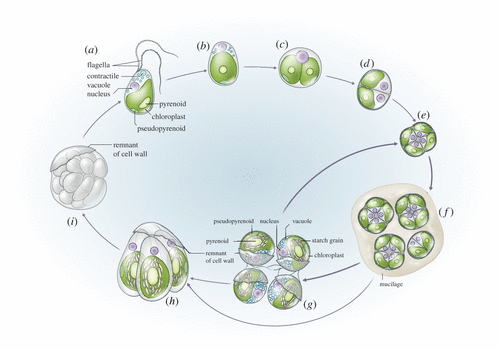Figure 1. Life cycle of Chlorokybus. (a) Zoospore with two unilaterally inserted flagella in slightly under apical position. (b) A young vegetative cell is formed after the zoospore is settled and (c) cell division can begin. (d) Two-cell stage of daughter cells are contained within the same gelatinous matrix and (e) cubic cell packages can contain groups of two to eight cells each. (f) Mature packages produce mucilage and (g) cell cycle can proceed through the production of autospores for asexual reproduction (g to e). (h) Zoospores might be formed by differentiation from autospores (g to h) or directly from mature packages (f to h). (i) Zoospores can form groups of up to 32 cells called ‘Maulbeerstadium’.
All land plants originated from a single evolutionary event when freshwater algae got a foothold on land. The group of algae that would later give rise to land plants had already been living in freshwater and terrestrial habitats for over one billion years. A tiny group of these algae, most distantly related to land plants, still lives. A team homed in on one species, Chlorokybus, which lives in wet soil and rock cracks, to find that it contains not one, but at least five different species.
Source from:
|




